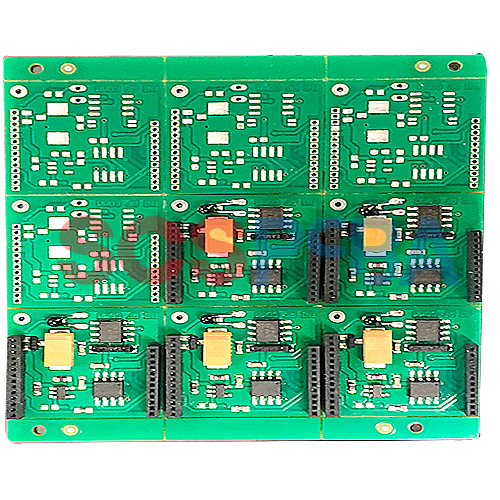
HOME /Products /PCBA Services /PCBA Repair


☑ SCSPCBA Profession Repair Teams
☑ Call Us Now!
☑ Request Your Free Quote Today
SCSPCBA has complete equipment and a professional technical team, that can provide PCBA (Printed Circuit Board Assembly) maintenance services, a complete maintenance process, and professional maintenance personnel, capable of repairing various PCBA failures.
SCSPCBA Frequently Used Tools and Materials in PCBA Repair
Welding Tool
Includes soldering iron, solder wire, solder paste, and more for joining and repairing components and connectors on PCBs.
Test Tools
Including multimeters, oscilloscopes, etc., used to check the connectivity, voltage, current and other parameters of components on the circuit board.
Toolbox
Includes common tools such as pliers, wrenches, tweezers, and more for adjusting and removing components and connectors on PCBs.
Electronic Component
If you need to replace components on the PCB, you need to prepare corresponding components, such as capacitors, resistors, transistors, etc.
Maintenance Manuals and Literature
Including PCB wiring diagrams, circuit diagrams, component specification sheets, etc., used to determine the location and connection method of components on the PCB, and to check the parameters of components.
Cleaning Supplies
Including cleaning cotton, alcohol, etc., used to clean solder slag, dirt, etc. on the PCB.
In The Process of PCB Assembly Failure Maintenance, We Analyze The Cause of PCB Failure According to The Following Aspects:
Visual Inspection
Check the appearance of the circuit board for obvious damage such as burnt, oxidized, and cracks, and check whether the components such as connectors, capacitors, resistors, triodes, diodes, and integrated circuits are normal
Component Testing
Use multimeters, oscilloscopes, signal generators and other testing instruments to test whether the components work normally, such as capacitors, resistors, transistors and other components may fail due to aging, expiration of service life or electromagnetic interference, resulting in the circuit not working properly
Signal Detection
Use an oscilloscope to check whether the signal link is normal. The connectors or solder joints in the PCBA may be loose, broken or poorly welded, such as checking the clock signal, data signal, control signal, etc., resulting in circuit disconnection or abnormal signal transmission
Thermal Imager Inspection
Use a thermal imager to check the temperature distribution on the circuit board. Because the components in the PCBA need to dissipate heat, find out the hot spots and overheated areas. If the heat dissipation is not good or the circuit design is unreasonable, it may cause the components to overheat and burn. These places may be the point of failure on the circuit board
Hardware Debugging
The fault point is determined by hardware debugging of the circuit board, such as connecting an external signal at a specific point and observing the reaction of the circuit to determine the fault point
Software Debugging
Check whether the program is correct during software debugging, such as whether the program is loaded correctly, whether the peripherals are correctly identified, whether the data processing is correct, etc
Fault Simulation
Fault simulation of the circuit board, simulating the working state of the circuit board under different conditions to find out possible fault points
Procedural Issue
If there is a chip in the PCBA that needs to be programmed, there may be a program error or a problem with the chip itself, resulting in the circuit not working properly
Once The Problem Spot is Found, We Will Repair It. The Maintenance Process Includes The Following Steps:
Diagnose the Problem
Identify PCB failures and identify the root cause of the failure to determine what needs to be done.
Disassembly and Cleaning
Remove the PCBA from the equipment and clean it for better inspection and maintenance
Replacement Parts
Identify the part to be replaced and remove it with the proper tools and techniques. For example, if it is found that a certain component needs to be replaced, it is necessary to prepare replacement parts for the component, as well as corresponding welding tools, etc.
Welding
Use a suitable soldering tool to mount the new component to the board.
Reprogram
If reprogramming is required, download the program to the PCBA
Test
Test the repaired PCBA to make sure it works properly
Clean and Organize Again
Clean up solder slag and dirt on PCB, and organize lines, components, and connectors, etc.
Acceptance and Delivery
Final acceptance to ensure the PCB is back in working order and the repaired PCB is delivered to the customer
It should be noted that special care is required when performing PCB repairs to avoid secondary damage to the PCB and components. If you are not sure about the operation steps, you can consult the professional maintenance engineers or engineers of SCSPCBA.
